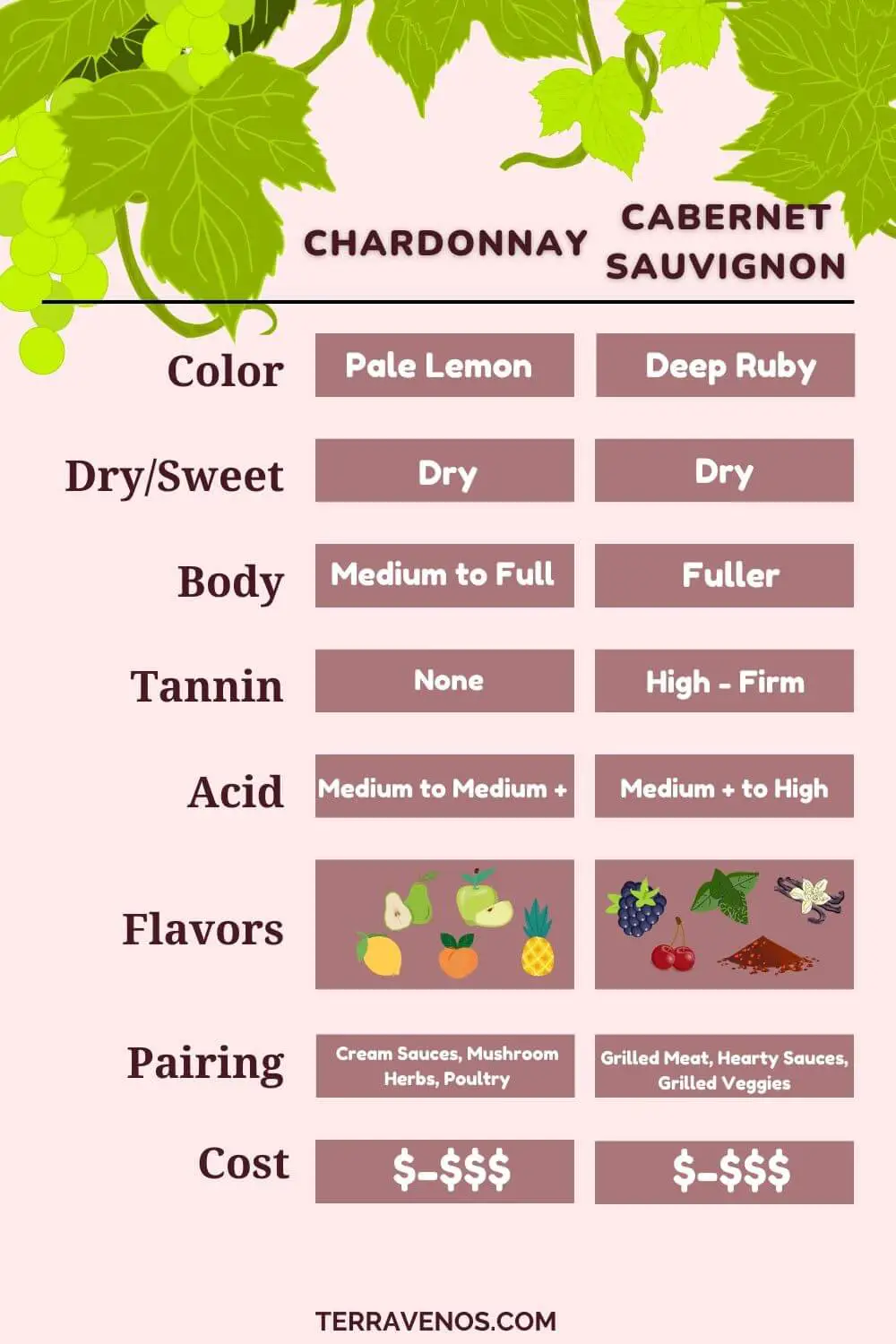
When it comes to wine appreciation, you can’t go wrong with starting with the basics. Like Cab Sav and Chardonnay.
Cabernet Sauvignon is a bold red wine with rich notes of dark fruit and hints of cedar, while Chardonnay is typically a full-bodied white wine with citrus, orchard, or tropical fruits, and sometimes a touch of butter or spice. Both Chardonnay and Cabernet are made at various price points, making them accessible to all wine lovers.
Here’s what you need to know about the differences between Cabernet Sauvignon vs Chardonnay wines.

- Cabernet Sauvignon Basics: A Bold Red
- Chardonnay Basics: A Lovely White
- Wine Comparison: Cabernet Sauvignon vs. Chardonnay
- Cabernet Sauvignon vs. Chardonnay Winemaking
- Cabernet Sauvignon vs. Chardonnay: Food Pairings and Serving Temperature
- Which Is More Expensive, Cabernet Sauvignon vs. Chardonnay?
- Which Is Better: Cabernet Sauvignon or Chardonnay?
- Final Thoughts – Cabernet Sauvignon or Chardonnay?
Cabernet Sauvignon Basics: A Bold Red
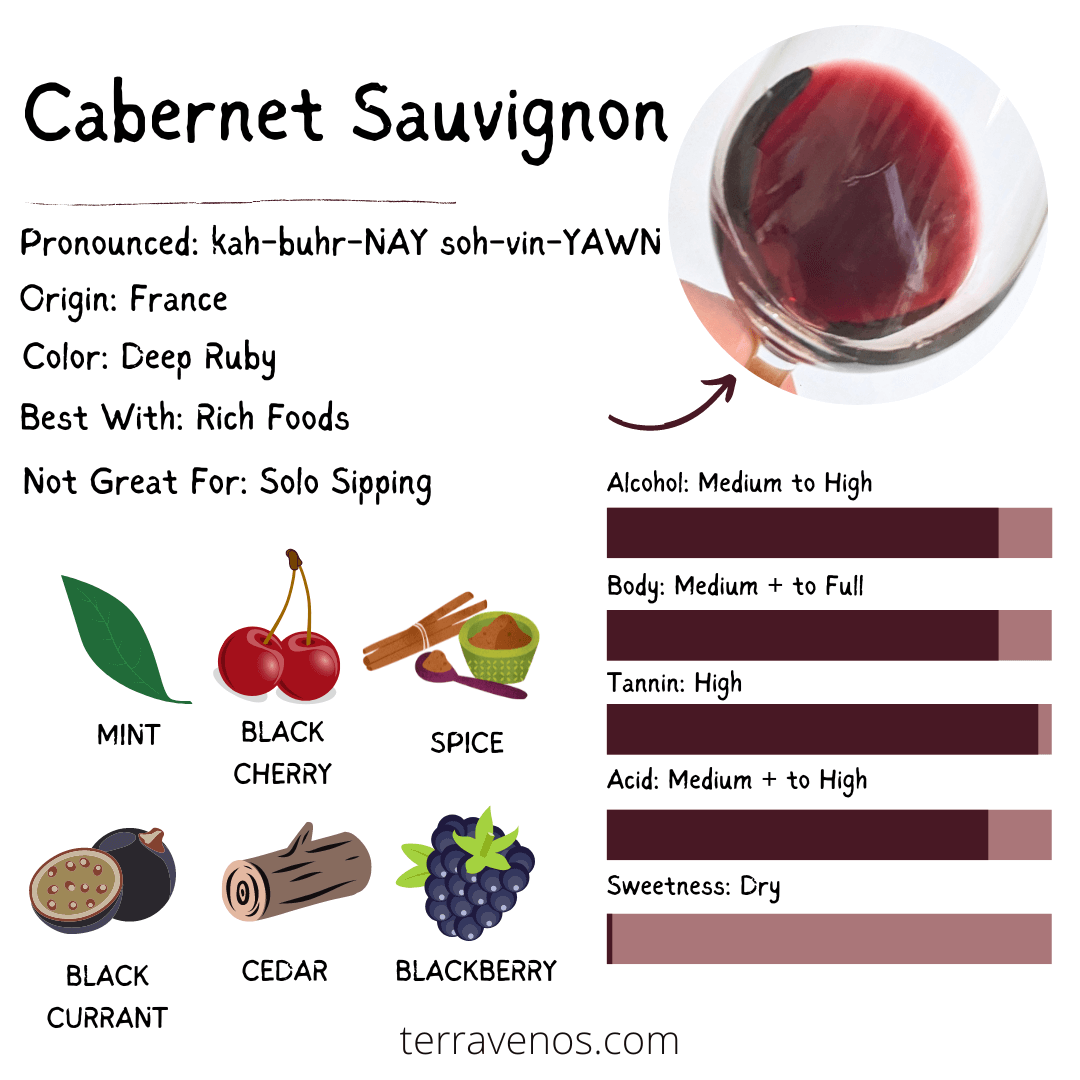
Originating from Bordeaux, France, Cabernet Sauvignon has gained global appreciation for its structured body.
Today, you’ll find Cabernet Sauvignon widely cultivated in various wine regions around the world, including California, Chile, and Australia. Cabernet Sauvignon displays a full-bodied profile with pronounced tannins and flavors of blackcurrant, blackberry, and dark cherry.
It often exhibits subtle notes of cedar, tobacco, and vanilla, which develop through aging in oak barrels.
Helpful Tip: Here’s what you need to know about how and why we use oak with wine.
As one of the world’s most popular red wine varieties, Cabernet Sauvignon is available at various price points. From everyday drinking options to premium selections crafted by renowned producers, you’ll find Cabs that you can enjoy regardless of your budget.
Fun Wine Fact: Cabernet Sauvignon is often blended with other grape varieties, such as Merlot and Cabernet Franc, to enhance its complexity and balance. Check out more in this post on Cabernet Sauvignon.
Famed Cabernet Sauvginon Regions:
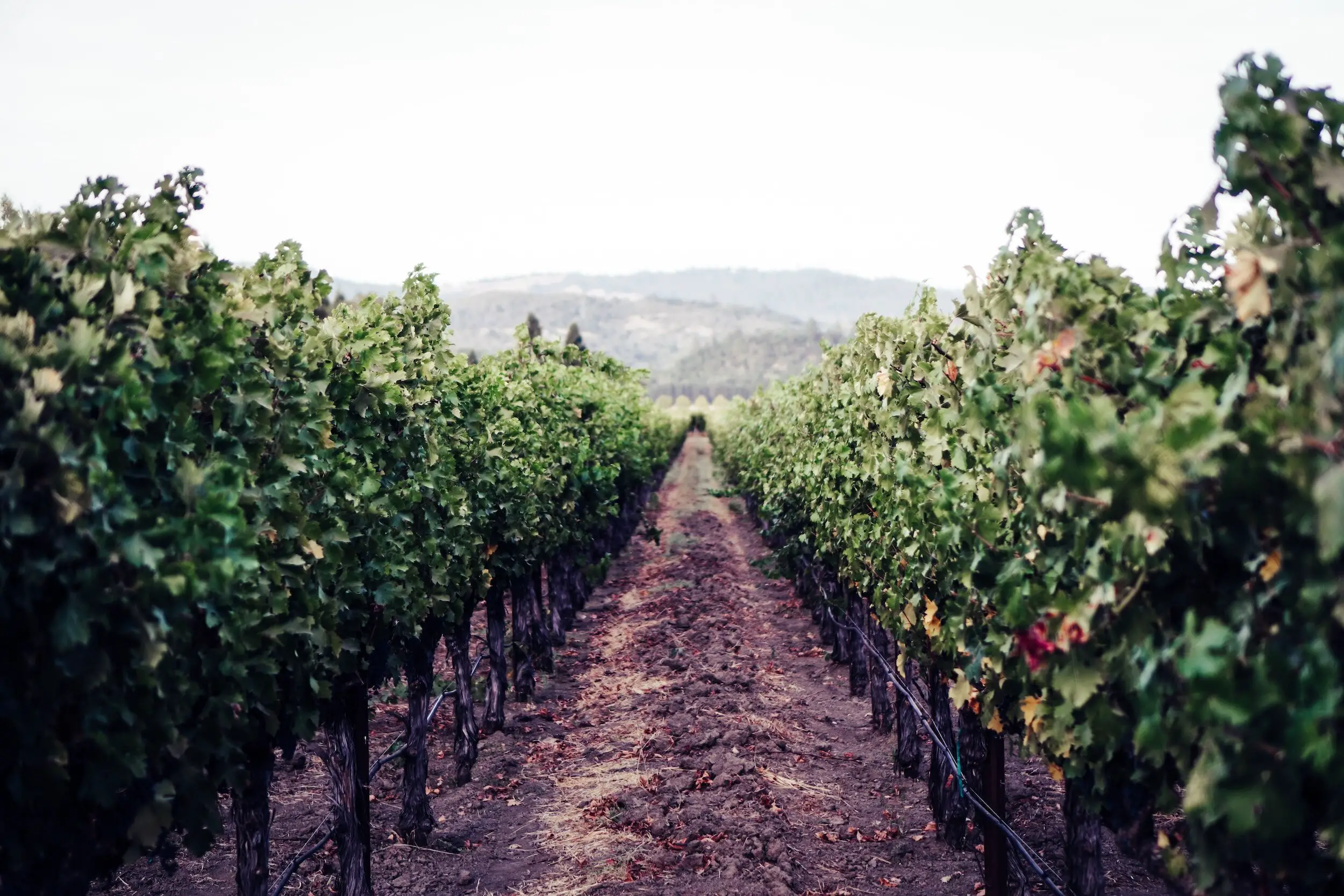
- Bordeaux AOC, France
- Napa Valley AVA, California, USA
- Sonoma County AVA, California, USA
- Columbia Valley AVA, Washington, USA
- Maipo Valley, Chile
- Coonawarra, Australia
- Margaret River, Australia
- Stellenbosch, South Africa
- Tuscany, Italy
Chardonnay Basics: A Lovely White
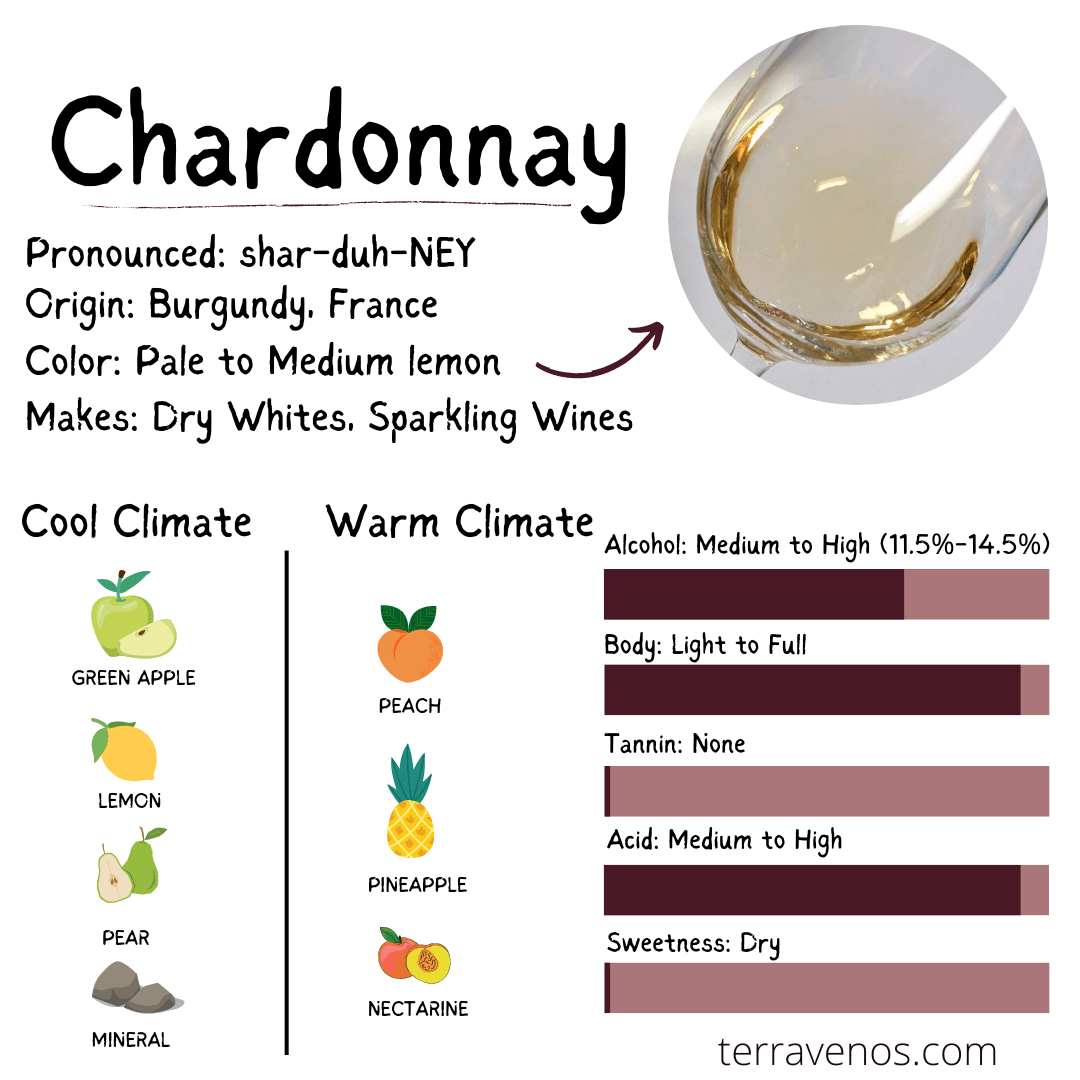
Chardonnay, originating from Burgundy, France, has earned worldwide popularity for its vibrant and diverse character.
Chardonnay is widely grown in regions like California, Australia, and Italy. Chardonnay wines typically showcase a medium to full-bodied profile with flavors of apple, pear, and citrus.
They often (but not always) carry a hint of oak, displaying nuances of vanilla and butter. The wine’s vibrant acidity and smooth texture contribute to its overall balance and drinkability.
Fun Wine Fact: Chardonnay is known for its versatility in winemaking styles, ranging from unoaked (crisp and fruity) to oaked (rich and creamy). Go check out this post on how Chardonnay gets its buttery profile.
Today, Chardonnay is celebrated worldwide for its quality and range of expressions, making it a beloved white wine variety.
Helpful Tip: Here’s everything you need to know about Chardonnay wine.
Famed Chardonnay Winegrowing Regions:
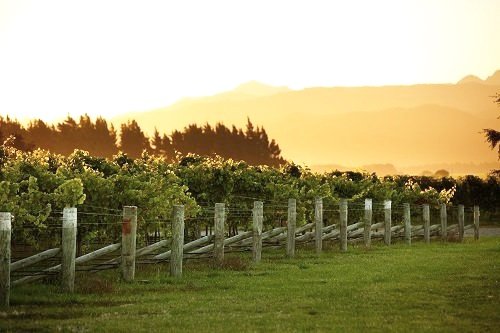
- Burgundy AOC, France
- Napa Valley AVA, California, USA
- Sonoma County AVA, California, USA
- Russian River Valley AVA, California, USA
- Margaret River, Australia
- Marlborough, New Zealand
- Casablanca Valley, Chile
- Maipo Valley, Chile
- Adelaide Hills, Australia
Wine Comparison: Cabernet Sauvignon vs. Chardonnay
Here’s a quick side-by-side comparison that highlights the main differences and similarities between Cabernet Sauvignon and Chardonnay.
Cabernet Sauvignon Wine Profile
- Body: Cabernet Sauvignon boasts a bold and full-bodied profile, accompanied by firm tannins.
- Flavor Profile: Rich flavors of blackcurrant, blackberry, dark cherry, with notes of cedar, tobacco, and vanilla.
- Tannins: Cabernet Sauvignon tends to have pronounced tannins, contributing to its structure and aging potential.
- Acidity: While still present, Cabernet Sauvignon usually exhibits moderate acidity.
- Aging Potential: Cabernet Sauvignon wines often benefit from aging, allowing the flavors and tannins to integrate and develop complexity over time.
Chardonnay Wine Profile
- Body: Chardonnay showcases a medium to full-bodied profile with a smooth texture.
- Flavor Profile: Fresh flavors of apple, pear, and citrus, with hints of vanilla and butter.
- Acidity: Chardonnay typically displays vibrant acidity, contributing to its freshness and balance.
- Versatility: Chardonnay is known for its versatility, offering a range of styles from crisp and fruity to rich and creamy.
Here is a quick guide to my top 5, everyday Chardonnay pairings for real people.
Are Cabernet Sauvignon and Chardonnay Similar?
Cabernet Sauvignon and Chardonnay share certain characteristics. Both wines offer a full-bodied experience, making them well-suited for pairing with a variety of dishes. Fuller-bodied wines can stand up to heartier foods, like roasted vegetables, dark leafy salads, or deli sandwiches.
What Is the Difference Between Cabernet Sauvignon and Chardonnay?
Cabernet Sauvignon is a red wine and Chardonnay is a white wine. Cabernet Sauvignon will have tannins, creating a drying sensation in your mouth as you sip. Expect blackcurrant, blackberry, cedar, tobacco, and vanilla.
Chardonnay has a smoother mouthfeel and showcases flavors of apple, pear, citrus, and hints of vanilla and butter.
Cabernet Sauvignon vs. Chardonnay Winemaking
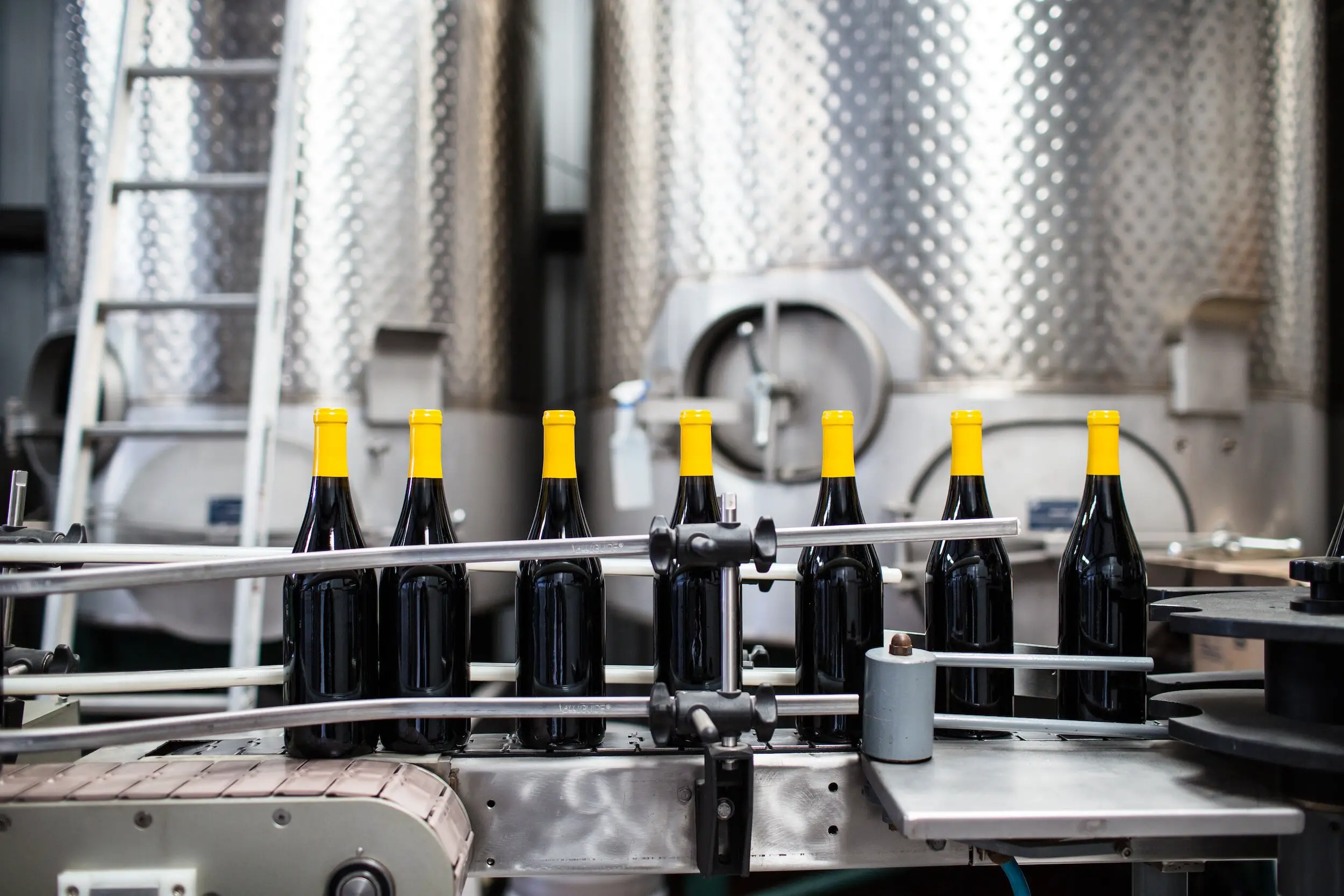
Winemakers commonly use oak for both Cabernet and Chardonnay, which contributes to flavors of cedar, tobacco, and vanilla in Cabernet Sauvignon and hints of vanilla and butter in Chardonnay.
As a red wine, Cabernet Sauvignon will be fermented at higher temperatures to help with color extraction. Chardonnay will be fermented at cooler temperatures.
Helpful Tip: Go check out this post on how wine fermentation works.
Cabernet Sauvignon vs. Chardonnay: Food Pairings and Serving Temperature

Cabernet Sauvignon’s structured tannins make it an excellent choice for pairing with red meats, grilled dishes (veggies or proteins), and aged cheeses. Cab’s layered flavors complement robust dishes and can cut through fat and protein-rich cuisine.
Discover: Cabernet Sauvignon Cheese Pairing Guide, and this Chardonnay cheese pairing guide.
Chardonnay’s vibrant acidity and smooth texture make it a versatile partner for seafood, poultry, pasta dishes, and creamy sauces (risottos are a personal favorite).
Cabernet Sauvignon and Chardonnay Serving Temperature
| Wine | Ideal Serving Temperature | Decanting |
|---|---|---|
| Cabernet Sauvignon | Slightly below room temperature (around 60-65°F or 15-18°C) | Beneficial, especially for young, tannic wines. Decant 1-2 hours before serving to enhance flavors and aromas. |
| Chardonnay | Chilled (around 45-50°F or 7-10°C) | Not typically necessary, best served immediately after opening to preserve freshness. |
Most Cabernet Sauvignon wines will benefit from aeration or decanting before drinking. (grab from site)
While some people may prefer to let Chardonnay breathe for a short period, it’s generally recommended to serve Chardonnay immediately after opening the bottle to preserve its vibrant acidity and fruit characteristics.
Which Is More Expensive, Cabernet Sauvignon vs. Chardonnay?

When considering the prices of Cabernet Sauvignon and Chardonnay, you’re probably curious about relative costs.
| Quality | Price Range | Price Range |
|---|---|---|
| Wine | Mid-Level | Premium |
| Chardonnay | $12 – $20 | $20 – $60 |
| Cabernet Sauvignon | $12 – $20 | $30-$100 |
Cabernet Sauvignon Cost
- Entry-level Cabernet Sauvignon wines range from $12 to $20 per bottle. These wines offer excellent value and showcase the varietal’s characteristic flavors and structure.
- Premium Cabernets from renowned regions or iconic producers, prices can range from $30 to $100 or higher.
Chardonnay Wine Cost
- Entry-level Chardonnay wines are available within an accessible price range, typically ranging from $10 to $20 per bottle. These wines offer great value for everyday drinking.
- Premium and top-tier Chardonnay wines can range from $20 to $60 or more, representing distinctive craftsmanship.
Helpful Tip: If you’re truly curious, here’s a deep dive into how wines are priced.
Which Is Better: Cabernet Sauvignon or Chardonnay?
If you appreciate robust, full-bodied wines with a broader flavor spectrum, Cabernet Sauvignon will likely be the better choice. If you prefer refreshing white wines with citrus and orchard fruit flavors and a smooth texture, Chardonnay will be the better option.
Discover More:
Cabernet Sauvignon vs Cabernet Franc
Cabernet Sauvignon vs Merlot
Cabernet Sauvignon vs Malbec
Cabernet Sauvignon or Pinot Noir?
Sangiovese vs Cabernet Sauvignon
Final Thoughts – Cabernet Sauvignon or Chardonnay?
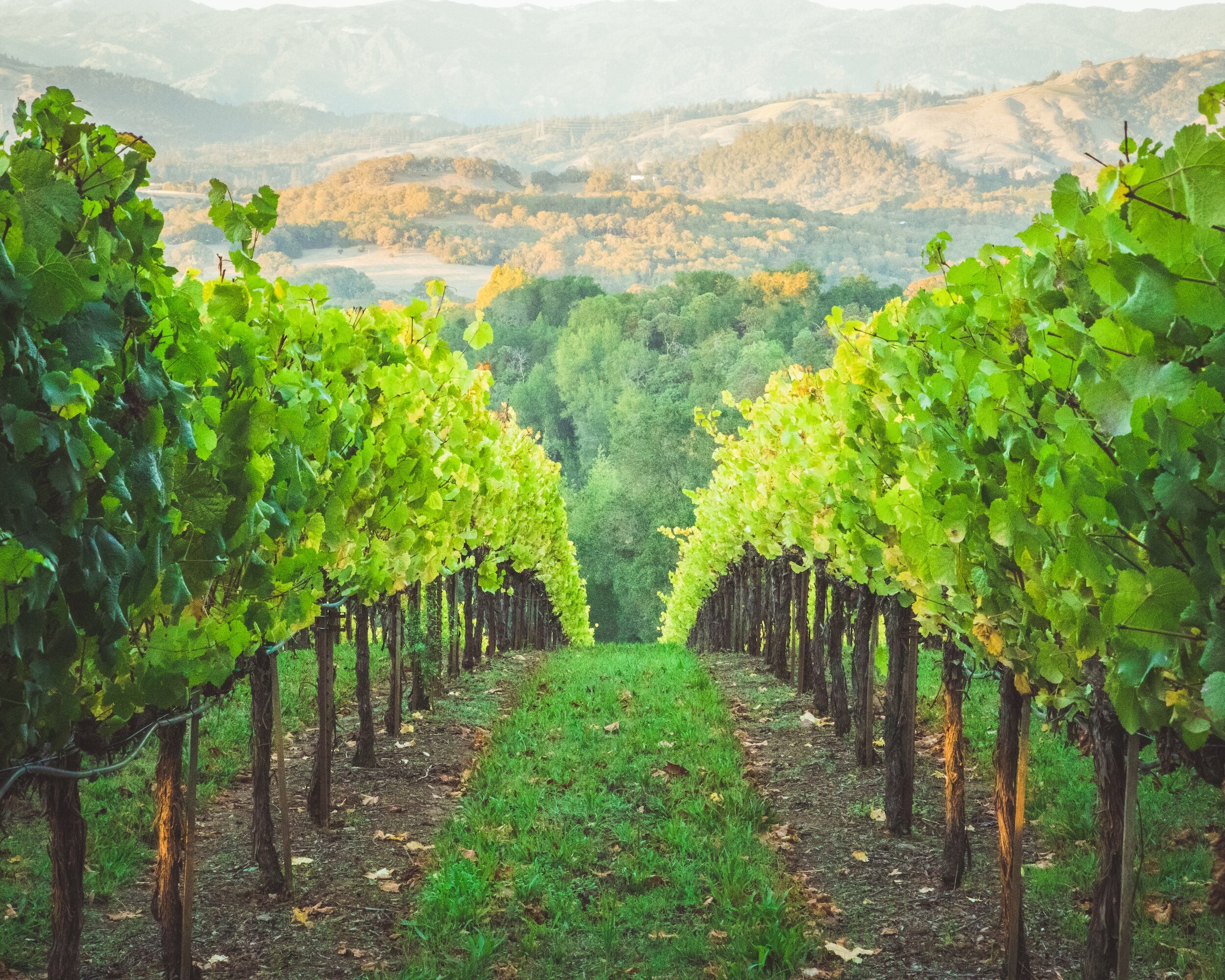
Both Cabernet Sauvignon and Chardonnay are delicious options with their own unique personalities.
- Hosting a side-by-side tasting is one of the best ways to learn about the differences between these two wines.
- Get yourself 2 bottles of similarly priced Cabernet Sauvignon and Chardonnay, invite a few friends, and host your own side-by-side tasting.
Cabernet Sauvignon presents a bold and structured wine that stands out for its depth of flavor and aging potential. Chardonnay, with its lively acidity and smooth texture, offers a refreshing and versatile option for lighter foods and summer sipping.
Thirsty for More?
Check out this fun post on 5 fabulous Chardonnay wine facts.
If you’re eager to get started with wine, think about hosting your own wine tasting for beginners.
You may be interested in other side-by-side comparisons. Check out Cabernet Sauvignon vs Merlot, and Chardonnay vs Pinot Grigio.
Don’t miss out on exploring these signature wines from famous wine regions around the world.



